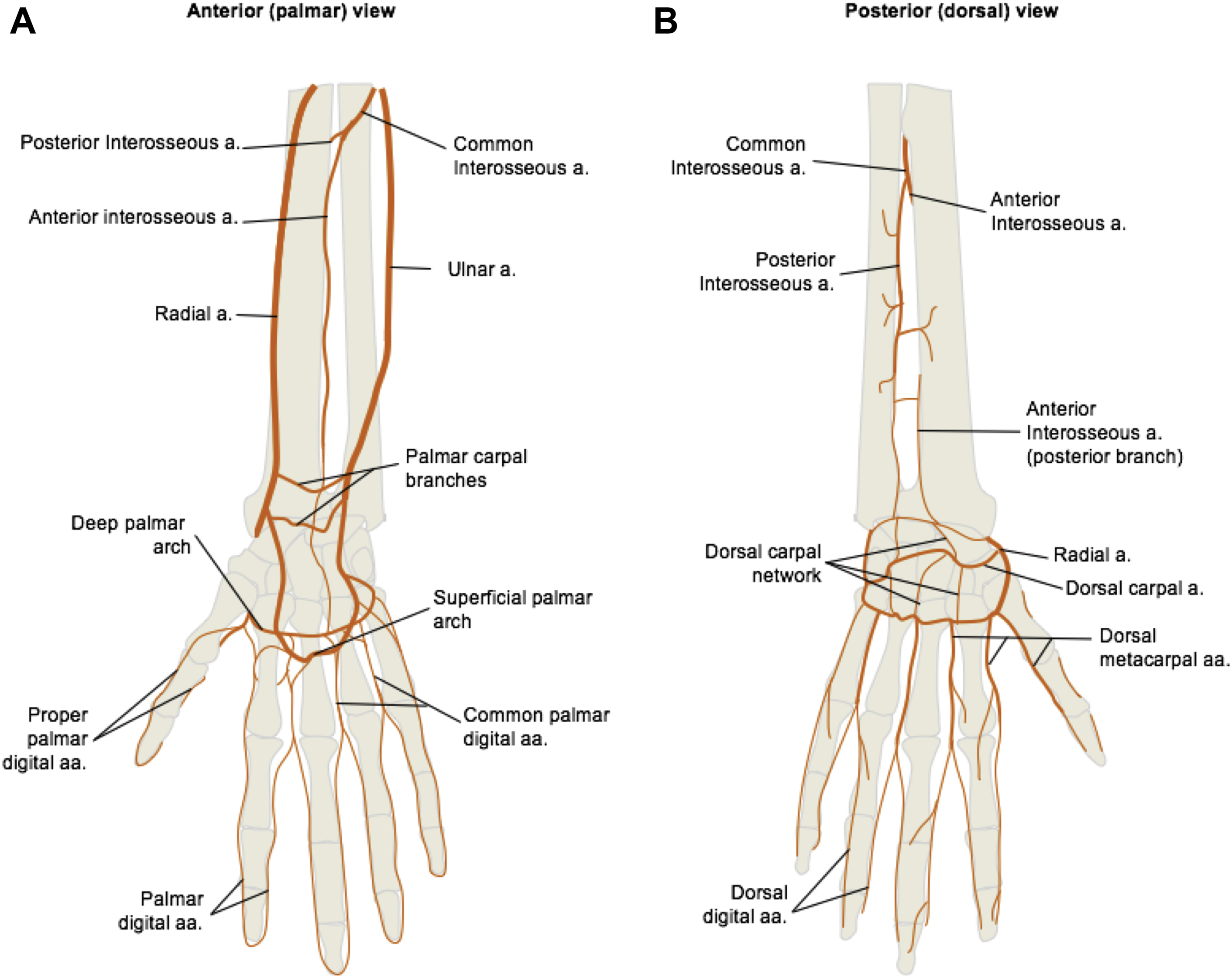Makindo Medical Notes"One small step for man, one large step for Makindo" |
|
|---|---|
| Download all this content in the Apps now Android App and Apple iPhone/Pad App | |
| MEDICAL DISCLAIMER: The contents are under continuing development and improvements and despite all efforts may contain errors of omission or fact. This is not to be used for the assessment, diagnosis, or management of patients. It should not be regarded as medical advice by healthcare workers or laypeople. It is for educational purposes only. Please adhere to your local protocols. Use the BNF for drug information. If you are unwell please seek urgent healthcare advice. If you do not accept this then please do not use the website. Makindo Ltd. |
The Radial and Ulnar Arteries
-
| About | Anaesthetics and Critical Care | Anatomy | Biochemistry | Cardiology | Clinical Cases | CompSci | Crib | Dermatology | Differentials | Drugs | ENT | Electrocardiogram | Embryology | Emergency Medicine | Endocrinology | Ethics | Foundation Doctors | Gastroenterology | General Information | General Practice | Genetics | Geriatric Medicine | Guidelines | Haematology | Hepatology | Immunology | Infectious Diseases | Infographic | Investigations | Lists | Microbiology | Miscellaneous | Nephrology | Neuroanatomy | Neurology | Nutrition | OSCE | Obstetrics Gynaecology | Oncology | Ophthalmology | Oral Medicine and Dentistry | Paediatrics | Palliative | Pathology | Pharmacology | Physiology | Procedures | Psychiatry | Radiology | Respiratory | Resuscitation | Rheumatology | Statistics and Research | Stroke | Surgery | Toxicology | Trauma and Orthopaedics | Twitter | Urology
Related Subjects: |The Coronary Arteries |The Axillary Artery |The Brachial Artery |The Carotid Artery |The Femoral Artery |The Popliteal artery |The Subclavian Artery |The Iliac Artery |The Brachial Artery |The Axillary Artery |The radial and Ulnar Artery
The radial and ulnar arteries are the two main arteries of the forearm. They arise from the bifurcation of the brachial artery at the level of the elbow and supply blood to the forearm, wrist, and hand.
Radial Artery
- Origin :
- The radial artery arises from the brachial artery at the level of the neck of the radius.
- Course :
- Runs along the lateral aspect of the forearm.
- Travels deep to the brachioradialis muscle in the proximal forearm.
- Becomes superficial near the wrist, lateral to the flexor carpi radialis tendon.
- Passes through the anatomical snuffbox and enters the hand.
- Branches :
- Radial Recurrent Artery : Supplies the elbow joint and surrounding muscles.
- Palmar Carpal Branch : Contributes to the palmar carpal arch.
- Superficial Palmar Branch : Contributes to the superficial palmar arch.
- Dorsal Carpal Branch : Contributes to the dorsal carpal arch.
- Deep Palmar Arch : The terminal part of the radial artery forms the deep palmar arch in the hand.
- Functions :
- Provides oxygenated blood to the lateral aspect of the forearm, wrist, and hand.

Ulnar Artery
- Origin :
- The ulnar artery arises from the brachial artery at the level of the neck of the radius, opposite the radial artery.
- Course :
- Runs along the medial aspect of the forearm.
- Travels deep to the pronator teres muscle and then between the flexor digitorum superficialis and flexor digitorum profundus muscles.
- Becomes superficial near the wrist, lateral to the flexor carpi ulnaris tendon.
- Enters the hand to form the superficial palmar arch.
- Branches :
- Anterior Ulnar Recurrent Artery : Supplies the elbow joint and surrounding muscles.
- Posterior Ulnar Recurrent Artery : Supplies the elbow joint and surrounding muscles.
- Common Interosseous Artery : Divides into the anterior and posterior interosseous arteries, supplying the deep structures of the forearm.
- Palmar Carpal Branch : Contributes to the palmar carpal arch.
- Dorsal Carpal Branch : Contributes to the dorsal carpal arch.
- Superficial Palmar Arch : The terminal part of the ulnar artery forms the superficial palmar arch in the hand.
- Functions :
- Provides oxygenated blood to the medial aspect of the forearm, wrist, and hand.
Clinical Relevance
- Radial Artery Pulse :
- The radial artery pulse can be palpated on the lateral aspect of the wrist, often used to measure heart rate.
- Allen's Test :
- Used to assess the patency of the radial and ulnar arteries and the integrity of the palmar arches before arterial blood sampling or cannulation.
- Arterial Occlusion :
- Blockage of the radial or ulnar arteries can lead to ischaemia of the hand and fingers.
- Symptoms: Pain, pallor, and coldness in the affected limb.
- Treatment: Depends on the cause; may include anticoagulation therapy, thrombolysis, or surgical intervention.
- Arterial Grafts :
- The radial artery is sometimes used as a graft in coronary artery bypass surgery due to its accessibility and suitable size.
Summary
The radial and ulnar arteries are essential for supplying oxygenated blood to the forearm, wrist, and hand. They arise from the brachial artery and provide multiple branches that contribute to the blood supply of the upper limb. Understanding their anatomy and clinical relevance is crucial for diagnosing and managing vascular conditions affecting the upper extremities.